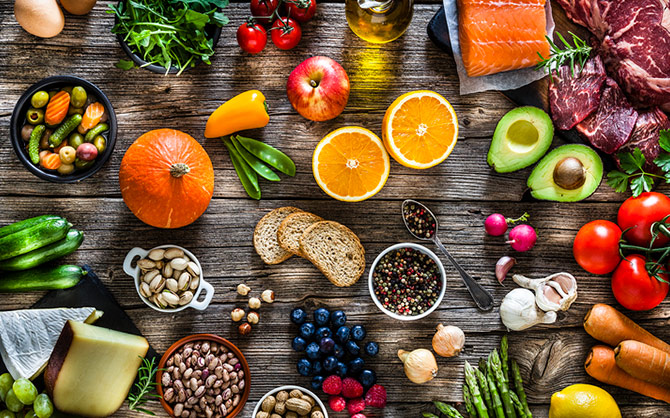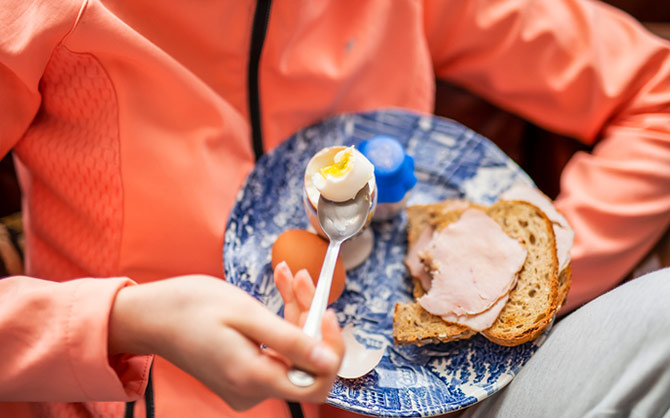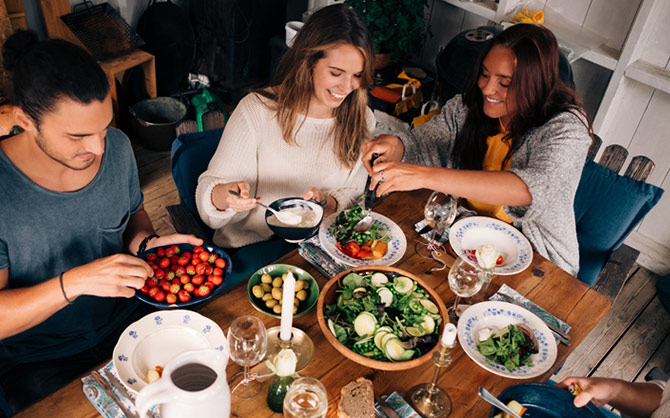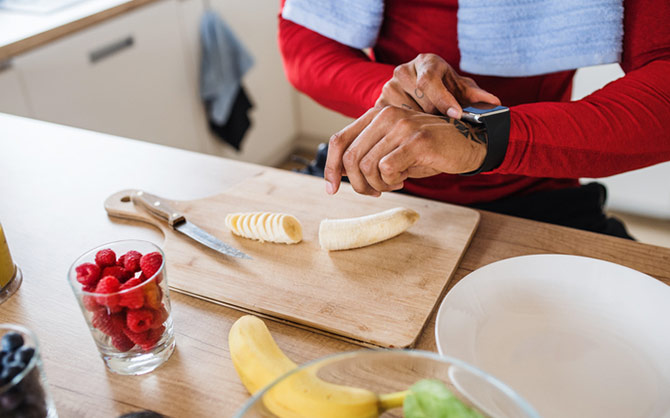Run Stronger in 2021: Food for thought

What, when, how much, and how often should we eat as runners? There’s no single magic answer but building a healthy relationship with food is a good start.
Fuel your body, but be flexible
No doubt about it — proper nutrition helps fuel your body for a great run. What we put in our body matters, both for performance and general health. Many runners prefer a balance of whole grains, lean proteins, and fresh fruit and vegetables. Many pro runners also typically consume less lactose-rich foods, sugary drinks and treats, and foods high in trans fats (think fried fast foods) when they are training.

These are great baseline choices for runners, but remember nutrition is individual to you; we all have different bodies and different needs. At the end of the day, food goes hand in hand with your goal setting and training.
Kelsey Thomas is the Seattle site director of The Emily Program, a nationally recognized organization that provides personalized eating disorder treatment for teens, young adults, and adults. She says that while athletes are right to think about nutrition as a way to fuel their bodies, she cautions that food shouldn’t define them as a people or athletes.
“Of course athletes are thinking about food as fuel. But one of the most important things that athletes should remember about food and nutrition is flexibility; food is a part of life. There should be pleasure in it; it should be fun. Sometimes athletes see themselves as their sports, but life is more than that. Maybe you want to share some cake with your niece on her first birthday; there shouldn’t be shame in that. That cake you enjoy with your family is just a part of life, and in a few days you should be able to look back and not feel guilty for eating it.”
The bottom line? Food and nutrition aren’t threats to your fitness; rather they empower you to improve your fitness.

What does a healthy relationship with food look like?
Jillian Lampert, chief strategy officer at The Emily Program, explains that at its core, a healthy relationship with food is based on needs and wants, not fear, anxiety or rules.
“Negative influences come from everywhere. We can get them from a website that’s telling you five simple tips for your diet, from a pamphlet from a healthcare provider telling you what you should eat, or a commercial selling the idea that fat is bad and if you eat it, you’ve broken some rule,” she says.
According to Lampert, we often weave together a collection of sources that tell us the correct way to eat. The problem with this is we then make choices based on external factors rather than internal ones.

Dr. Kyle Pfaffenbach, a professor in the Health and Human Performance program at Eastern Oregon University and advisor to Brooks Beasts, agrees that a healthy relationship with food starts with the individual. He offers these four simple ways to help build a foundational nutrition philosophy.
- Food and nutrition aren’t things to be solved, mastered, conquered, or perfected.
- A healthy relationship with food is adaptable. For runners, this means dismissing the idea that there are magic foods that will work for a workout or on race day. Having a basic understanding of nutrition and energy production can help individuals make decisions and not be stressed when their “perfect” race food is not available.
- Mindful eating can help develop a healthy relationship with food. This means slowing down, chewing thoroughly, exploring textures and tastes at a deep level, and acknowledging and thinking about the origin of food and the journey it took to your plate. This is the opposite of “mindless” eating, which could be snacking out of boredom.
- Food should be enjoyed! We have more access to a wide variety of safe, healthy, and nutritious foods from cultures across the world. This is amazing, should be appreciated, and can make food an enriching part of one’s life.
If you or someone you know has an unhealthy relationship with food or struggles with an eating disorder, the National Eating Disorder Association is an excellent resource.
For more about running strong in 2021, check out our stories about resolutions and mental strength.